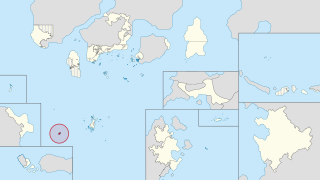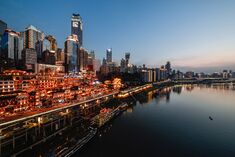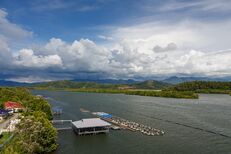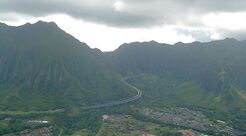Gýordonz

|
This article or section is a work in progress. The information below may be incomplete, outdated, or subject to change. |
| Gýordonz Hÿөſdontch Kota Gýordon 겨르동즈(병동)시 屏東市 (Heitō-shi) Gýordonz Islands Ilól Hÿөſdontch Kepulauan Gýordon 屏東群島 |
|||
|---|---|---|---|
| Directly-administered city of Phinbella | |||
| Gýordonz Directly-Administered City Ğrөd $áſkajh-Adminitchtÿa kka Hÿөſdontch Kota Pentadbiran Langsung Gýordon 겨르동즈직할시 屏東直轄市 Gýordonz Islands Directly-Administered City Ğrөd $áſkajh-Adminitchtÿa kka Ilól Hÿөſdontch Kota Pentadbiran Langsung Kepulauan Gýordon 겨르동즈제도직할시 |
|||
|
|||
 |
|||
| Country | |||
| Political divisions | Free area of the Federation | ||
| Administrative region | Gangwol | ||
| Geographical region | Jifū | ||
| Settled | c. 106 AN (c. November -116BP) | ||
| Separated from Unincorporated Territory | 1.I.1733 AN (June 1, RP 2620) | ||
| City seat | Melekeok State | ||
| Divisions | 14 districts | ||
| Government | |||
| • Type | Direct federal administered city with mayor–council government | ||
| • Body | Gýordonz Metropolitan City Council | ||
| • Mayor | Hoo Seok-hwa | ||
| • Council president | Wan Rusydi Mat Salman | ||
| • Municipal PFGCC Chairman | Takeshi Itsuyama | ||
| • House of Senate Representation | 1 deputy (proposed) | ||
| • House of Majilis Representation | 4 deputies (proposed) | ||
| Area | |||
| • Metropolitan | 840.02 km2 (324.33 sq mi) | ||
| • Land | 750.24 km2 (289.67 sq mi) | ||
| • Water | 89.78 km2 (34.66 sq mi) | ||
| • Betty Islands National Park | 10.18 km2 (3.93 sq mi) | ||
| Elevation | 3.2 m (10.5 ft) | ||
| Highest elevation (Bukit Sembulan) | 450.8 m (1,479.0 ft) | ||
| Population (1733 AN) | |||
| • Metropolitan | 1,841,790 | ||
| • Density | 2,200/km2 (5,700/sq mi) | ||
| • Urban | 674,031 | ||
| Demonym | Gýordonian · Gýordonzian | ||
| Time zone | NAT (UTC+4) | ||
| Postal codes | 141000 – 145000 | ||
| Calling code | +840 23 4 | ||
| ISO 3166 code | HU-PH-GAR | ||
| Vehicle registration | HY | ||
Gýordonz (Gýordonzian: Hÿөſdontch IPA: [hjørd̪oŋʈ͡ʂː]; Phineaner: Gýordon; Taesongean: 겨르동즈; RR: Gyeoreudongjeu; MR: Kyŏrŭdongjŭ), known as the Gýordonz Islands (Gýordonzian: Ilól Hÿөſdontch IPA: [ilɔl ˈhjørd̪oŋʈ͡ʂː]; Phineaner: Kepulauan Gýordon; Taesongean: 겨르동즈제도; RR: Gyeoreudongjeu-jedo; MR: Kyŏrŭdongjŭ-chedo) or Heitō (Sangunese: 屏東, translit.: Heitō?, Taesongean: 병동; RR: Byeongdong; MR: Pyŏngdong), officially known as the Gýordonz City (Sangunese: 屏東市, translit.: Heitō-shi?, Gýordonzian: Ğrөd Hÿөſdontch IPA: [gaʁød ˈhjørd̪oŋʈ͡ʂː]; Phineaner: Kota Gýordon; Taesongean: 겨르동즈시; RR: Gyeoreudongjeu-si) or the Gýordonz Directly-Administered City (Sangunese: 屏東直轄市, translit.: Heitō-chokkatsushi?, Gýordonzian: Ğrөd $áſkajh-Adminitchtÿa kka Hÿөſdontch; Phineaner: Kota Pentadbiran Langsung Gýordon; Taesongean: 겨르동즈직할시; RR: Gyeoreudongjeu-jikhalsi; MR: Kyŏrŭdongjŭ-chikhalsi), is a Phinbellan directly-administered metropolitan city located in the west of the Captive Sea. It is located approximately more than 200 kilometers from the San Furansōkyō-Ume Momo-Rintis Island metropolitan area, Maritime Kachi Kochi. Gýordonz is one of the four directly-administered cities under the federal government apart from Cyberaya, Liancourt Rocks and Heijō. It is the only directly-administered metropolitan city located in the middle of the ocean. The city has a geographical area in the form of an archipelago where the largest island has located a city center, which is Melekeok State on the west side. The metropolitan city of Gýordonz has covered the entire archipelago with a land area of 750.24 square kilometres (289.67 sq mi), with a population of 1,841,790 people of various ethnicities and races. Gýordonz is one of the main hubs of the entertainment industry in Phinbella apart from Negara Awan, Springwind Islands, Providenciales, Phinéas Padolski, Danville and Kéijō. It is also a second hub for offshore business, finance, hospitality and military defence. The city of Gýordonz is indeed characterized by the combination of various cultures found in the Phineonesian region such as the cultures of the Phineaner, Taemhwanian, Sangunese and Western communities, where this cultural mix can be reflected in architecture, demography, cuisine, music and local speech. Gýordonz is also the hometown of the local language, Gýordonzian, which is spoken by almost all of the city's residents, and the city also houses the Gýordonzian Culture, Art and Language Center which is located in the middle of the city center.
The metropolitan city of the archipelago was once an uninhabited archipelago until -250BP, it was a non-resident fishing village, and it was first explored in November -116BP when a group of Westerner settlers came to the archipelago and established a permanent settlement there. In -110BP, the Royal Barinean Outlying Islands Chartered Company (SBKTB) was one of the first to establish a settlement in these islands, while the Shandānø'kaílander Concession was subsequently established in the northern area of the archipelago in -104BP. Early in the exploration, several chartered companies established concessions on the islands and development on the islands began shortly thereafter. Gýordonz was once part of Permata Mutiara from RP 2600 to RP 2612 under the Phinbellan provisional government, and during that time the city subsequently flourished, becoming one of the main offshore commercial and financial hubs of the Phineonesian region in the end of RP 2600s and early RP 2610s, and that period was also a witness to local rebellions, especially the Mengkabong and Melekeok Revolt in RP 2606. However, Gýordonz was included in the administration of the Carey Islands Territory from RP 2612 and into the Phinbellan Unincorporated Territory from RP 2616, but it is still inhabited and growing in population until its seperation in 1733 AN. Gýordonz was granted city status in 17.XI.1720 AN until its status was raised to a directly-administered metropolitan city.
Gýordonz has two main gateways, Persisir Air International Airport and a container port known as Port Betty, both of which are the busiest in the archipelago, and the city is considered to be the busiest offshore transport hub. Gýordonz also has two toll expressways, a light rapid transit system train network and also a streetcar network, it simultaneously gradually connects almost the entire city, especially on this main island. Gýordonz has four seasons with a favorable humid subtropical climate and subtropical highland climate, and has a modern and natural scenery, it makes this new metropolitan city one of the popular tourist destinations in Phinbella apart from other major cities. Some attractions that are the focus of tourists in this city are the Betty Islands which is a cluster of islands located 25 kilometers from the main island, Fiča i Feđja which is an estuary area that was once used as a military base, Gayang Bridge, Lincolnuchi Beach, Bandar Pulau Laila, Pavilion shopping center, Xinotown in east of city center, Pasar Besar Kaitou, Mengkabong War Memorial, Gýordonz City Museum, New Hebrides and Pončeh. As the city has a modern look, it is also famous for its nightlife. The city's famous narrow alleys are located in the Fiča i Feđja district because they are passable. Gýordonz has a mountain range that is as high as 1,245 metres (4,085 ft) where it stretches in the middle of the main island.
Etymology
Gýordonz has various versions and its own stories in the eyes of this metropolitan community, the most accepted by some residents is that the name of this city was given in -169BP where a ship led by Sir Azroy Meidhakou Shearp had sailed from Bandar Betawi to Iñderaqonır, Sir Azroy's ship had stopping at islands that have no name but were once a stopover for fishermen. This ship stopped on November 17, -169BP where it was the birthday of a Poyoan chief named Tuan Penghulu Anak Negeri Alexander Rýaungkas van daau Gýórdúhan. The name Gýórdúhan are believed to have been taken from the Calbic surname which is Gordon, then it was evolved by the Poyoan community and became Gýórdúhan, Gýórdunan and Gýórdayan. Because of the events of that day, Sir Azroy named these islands as Tok Penghulu Gýórdúhan Islands or Tok Penghulu Gýórdouhan Islands. The naming of these islands underwent an evolution where it changed to Tok Ulu Gýórdouhan Islands, then became Tulu Gýórdoun Islands, Tulu Gýórdon Islands, Gýórdon Islands and now Gýórdonz Islands. In the Phineaner language, it is usually pronounced as "Gýordon" in everyday speech even though the letter "Y" with the mark above still sounds "Y" in general, but officially, it is always written as "Gýordonz". In the Taesongean language, the name of this city is pronounced 겨르동즈 (Gyeoreudongjeu; Kyŏrŭdongjŭ). Meanwhile, in the local language native to this city known as the Gýordonzian language, the name of this city is known as Hÿөſdontch, Ğrөd Hÿөſdontch and Ilól Hÿөſdontch.
Besides Gýordonz, there are also other older names for this metropolitan archipelago. The city's name is popularly known as Heitō (屏東), this name was given by a local Sangunese explorer from the East Blue region of the west Captive Sea, the name Heitō itself means "East Blue wall", but literally means "east wall". It is understood that there is a coral reef that surrounds the main island of the archipelago and serves as a defensive wall for the island. However, despite having coral reefs, there are claims that Gýordonz is actually named after the many sea walls and fortifications along the coast of the main island, but currently there are only about 40 sea walls and fortifications in the city. The Taesongean people who live in this archipelago also know it as 병동 (Byeongdong or Pyŏngdong) which has the same meaning as the Sangunese term.
History
Early settlement
Colonial concession era
Phinbellan provisional government
Mengkabong and Melekeok Revolt
Modernity
Granted the city status and became directly-administered city
Major events
Geography

Gýordonz is located about 200~250 kilometers from Ume Momo or Rintis Island which is the closest city to the Jifū region which only covers the Halim territory, the closest point is Toyohara which has now become part of the administration of the Maritime Kachi Kochi territory in October RP 2619. It is located on the west side of the Captive Sea, and the entire main island has determined the development of the entire city itself. Gýordonz is the most remotest Phinbellan major city and one of the remotest cities in the Phineonesian region. The distance from this city to the capital of the country, Negara Awan is very far which is about 600~650 kilometers. Gýordonz does not have any land borders, but instead has a maritime border with the Maritime Kachi Kochi waters and the Halim territory, and all around this island city is bordered by the sea. Administratively, it belongs to the Gangwol region together with the Federal Special Capital Territory, the Territory of Flower and the Kota Hilir Special Administrative Territory, as well as includes remote islands, but geographically, the city is included in the Jifū region, Maritime Kachi Kochi also belongs in that region geographically.


Gýordonz has an area of 840.02 square kilometres (324.33 sq mi), with a land area of 750.24 square kilometres (289.67 sq mi), and a water area of 89.78 square kilometres. It covers one main island and it includes smaller related islands such as Ford Island as well as islands in the Betty Islands National Park and several islands off the southeast coast. Its coastline is 224 kilometers long. Gýordonz has two separate small volcanic ranges located in the middle of the main island which is the Sayao-konomi Range and Pandaruan Range, with a relatively wide lowland between them caused by the flow of the river. The highest point of this city is located in the southern range known as Mount Sembulan which is 1,245 metres (4,085 ft) high above the sea level.
The main island of this city has several rivers that serve as the main source of water for its residents, the source of which is understood to come from the two mountain ranges on this island.
Climate
| Gýordonz | ||||||||||||||||||||||||||||||||||||||||||||||||||||||||||||
|---|---|---|---|---|---|---|---|---|---|---|---|---|---|---|---|---|---|---|---|---|---|---|---|---|---|---|---|---|---|---|---|---|---|---|---|---|---|---|---|---|---|---|---|---|---|---|---|---|---|---|---|---|---|---|---|---|---|---|---|---|
| Climate chart (explanation) | ||||||||||||||||||||||||||||||||||||||||||||||||||||||||||||
| ||||||||||||||||||||||||||||||||||||||||||||||||||||||||||||
| ||||||||||||||||||||||||||||||||||||||||||||||||||||||||||||
Although it is an island city and located in the middle of the ocean, Gýordonz has a cooler version of the humid subtropical climate (Köppen: Cfa) with an average annual temperature of 16.4 °C (61.5 °F) for the urban, populated and coastal areas, and 14.1–17.9 °C (57.4–64.2 °F) for suburban areas and mountain ranges, while in remote archipelago areas around the main island it has an average temperature of 15.6 °C (60.1 °F). Extremely high or low temperatures are rare in this city. The highest temperature ever recorded was 36.9 °C (98.4 °F) which was recorded on 19 August RP 2612, while the lowest temperature ever recorded was −8.4 °C (16.9 °F) on 14 February -6BP. The city has four distinct seasons, like most every part of Phinbella has unique four seasons. Winters in the city are mild to cold and humid, sometimes quite dry with strong winds — northeasterly winds brought from the Mattimeo mountains and the Kelavit Highlands can cause nighttime temperatures to drop below freezing. Gýordonz and the surrounding outlying islands receive relatively little snow, each year it snows around December and January and there are an average of 5.2 days with snow and 1.8 days with snow cover. Summers in the city are hot and humid, and occasional heavy rain or thunderstorms can be expected. On average, the city averages 12.8 days above 35 °C (95 °F) each year. Around June and July, coastal areas and city centers are usually cooler than inland areas due to the effect of the ocean where the wind is brought from the southwest. In late summer and early autumn, the city is generally hot and humid and may be prone to typhoons at that time and it usually rains either lightly or heavily.
The months of February to April are usually the most comfortable, with clear skies and pleasant temperatures because the most pleasant season is usually spring, although changeable and often rainy. Around August to November, autumn occurs, which is usually sunny and dry.









